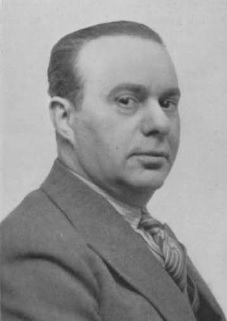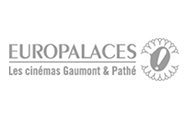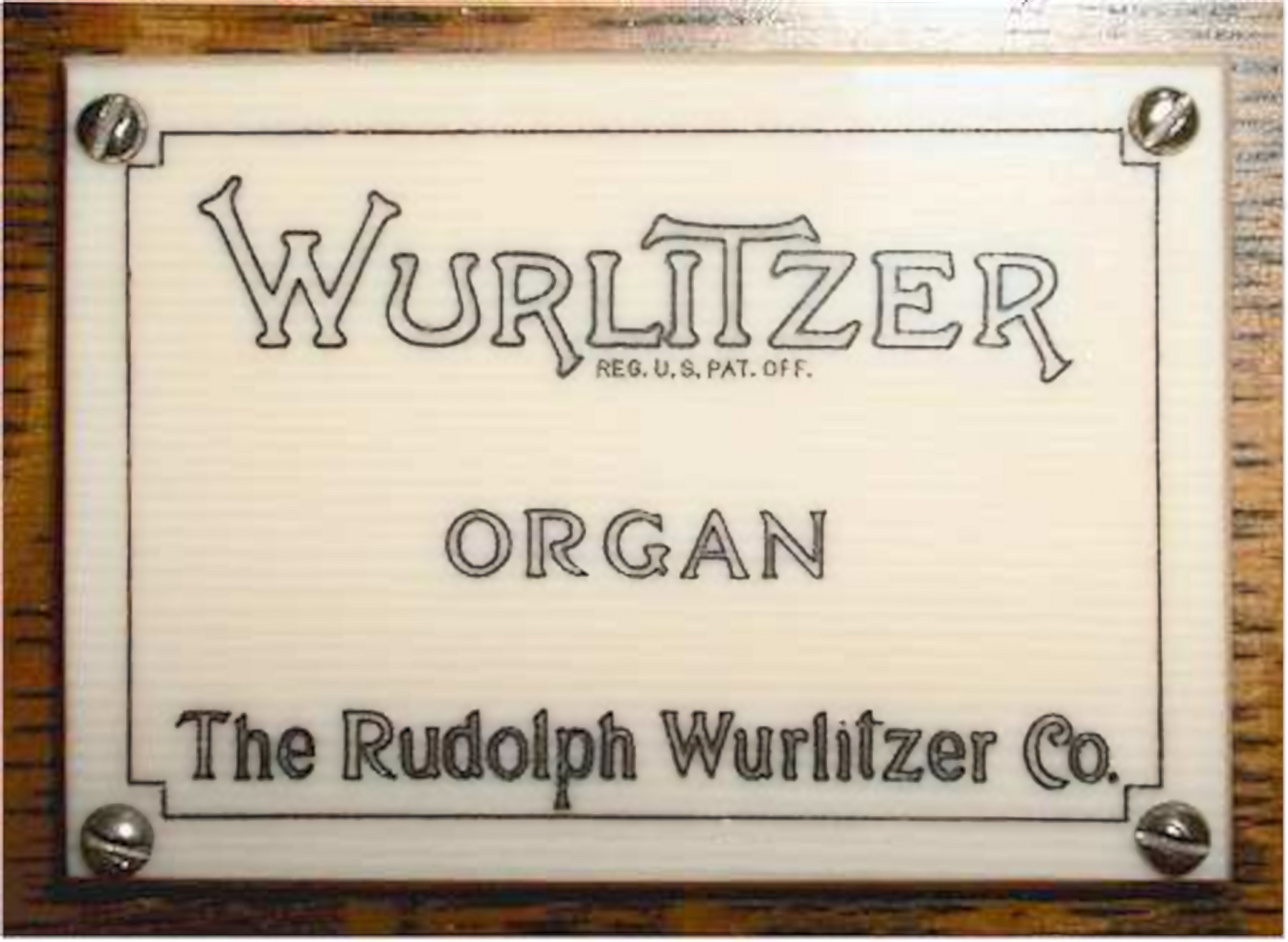|
Tuschinski
The Koninklijk Theater Tuschinski (English: Royal Theater Tuschinski) is a movie theatre in Amsterdam, Netherlands, near Rembrandtplein. History The theater was founded by Abraham Tuschinski, together with his brothers-in-law Hermann Gerschtanowitz and Hermann Ehrlich. Tuschinski at the time already operated four theaters in Rotterdam and wanted to open a theater in Amsterdam of worldclass. Construction started on 18 June 1919, the theater was built in Art Deco, Jugendstil and the Amsterdams School style at a cost of circa ƒ 4 million.Anton van Elburg, Dennis Römer: ''75 jaar Tuschinski Theater''. Publish, Amsterdam 1996, Tuschinski wanted to open the theatre with the first theatre organ in the Netherlands; unfortunately Wurlitzer couldn't deliver one in time. Determined to open with an organ Tuschinski travelled to Brussels to acquire an existing one from another cinema. On October 28, 1921, the theatre opened its doors for the first time and on the next day Dutch newspape ... [...More Info...] [...Related Items...] OR: [Wikipedia] [Google] [Baidu] |
Abraham Icek Tuschinski
Abraham Icek Tuschinski (Polish spelling: Tuszyński) (Brzeziny (near Łódź), 14 May 1886 – Auschwitz, 17 September 1942) was a Dutch businessman of Jewish Polish descent who ordered the construction of the Tuschinski Theater, a famed cinema in Amsterdam. While emigrating to the United States in 1903 Tuschinski decided to remain in Rotterdam during his stopover there. He found success as a cinema owner, opening his first four cinemas in 1911: the Thalia, Cinema Royal, Scala and Olympia. His most luxurious cinema in Rotterdam, the Grand Theater, opened in 1928. His crowning achievement, the Tuschinski Theater, opened its doors in Amsterdam on 28 October 1921. The theater had an audience capacity of 1620, which made it the largest Dutch cinema at the time. The unique design of this building was a mix of three modern styles: Amsterdamse School, Art Deco and Jugendstil. The elaborate exterior and opulent, richly decorated interior were restored to their former glory in the ... [...More Info...] [...Related Items...] OR: [Wikipedia] [Google] [Baidu] |
Les Cinémas Pathé Gaumont
Les Cinémas Pathé Gaumont is a cinema chain owned by Pathé, with operations in France, the Netherlands, Switzerland, Belgium, and Tunisia. The company is market leader in each country, with the exception of Belgium and Tunisia. It is Europe’s second largest cinema chain. History Les Cinémas Pathé Gaumont was formed in 2001 when the French film production and distribution companies Pathé and Gaumont merged their cinema operations, respectively owned by Jérôme Seydoux and Nicolas Seydoux. Gaumont owned 34% and Pathé owned 66% of the shares in the joint venture. During the first years of operation the company was called ''Europalaces'', but it was later changed to Les Cinémas Gaumont Pathé. On 1 March 2017, it was announced that Gaumont sold its 34% stake in Les Cinémas Gaumont Pathé to Pathé for €380 million, Gaumont wanted to focus more on the production and distribution of content. The name of the company changed shortly thereafter to Les Cinémas Pathé Gaumo ... [...More Info...] [...Related Items...] OR: [Wikipedia] [Google] [Baidu] |
Movie Theaters In The Netherlands
There are 137 movie theaters and 31 arthouse cinemas in the Netherlands, with a total of ca. 675 screens,See table 1 idit document This includes movie theatres with a TV-sized screen. in addition to 79 small arthouse cinemas and a number of adult movie theaters. The main movie theater chains in the Netherlands are Pathé, VUE and Kinepolis. Pathé Pathé Theatres B.V. is part of the EuroPalaces movie theater chain with 75 movie theaters with 730 screens (2004), mainly in France, which in turn is part of Pathé. Pathé Theatres B.V. operates a chain of theaters (most multiplex) in the Netherlands: *Pathé Amersfoort in Amersfoort (8 screens) *Pathé Arena in Amsterdam (14 screens) *Pathé City in Amsterdam (7 screens) *Pathé de Munt in Amsterdam (13 screens) *Pathé Tuschinski in Amsterdam (6 screens) *Pathé Rembrandt Arnhem in Arnhem (5 screens) *Pathé Breda in Breda (7 screens) *Pathé Delft in Delft (7 screens) *Pathé Buitenhof in The Hague (6 screens) *Pathé Schevening ... [...More Info...] [...Related Items...] OR: [Wikipedia] [Google] [Baidu] |
Art Deco
Art Deco, short for the French ''Arts Décoratifs'', and sometimes just called Deco, is a style of visual arts, architecture, and product design, that first appeared in France in the 1910s (just before World War I), and flourished in the United States and Europe during the 1920s and 1930s. Through styling and design of the exterior and interior of anything from large structures to small objects, including how people look (clothing, fashion and jewelry), Art Deco has influenced bridges, buildings (from skyscrapers to cinemas), ships, ocean liners, trains, cars, trucks, buses, furniture, and everyday objects like radios and vacuum cleaners. It got its name after the 1925 Exposition internationale des arts décoratifs et industriels modernes (International Exhibition of Modern Decorative and Industrial Arts) held in Paris. Art Deco combined modern styles with fine craftsmanship and rich materials. During its heyday, it represented luxury, glamour, exuberance, and faith in socia ... [...More Info...] [...Related Items...] OR: [Wikipedia] [Google] [Baidu] |
Wurlitzer
The Rudolph Wurlitzer Company, usually referred to as simply Wurlitzer, is an American company started in Cincinnati in 1853 by German immigrant (Franz) Rudolph Wurlitzer. The company initially imported stringed, woodwind and brass instruments from Germany for resale in the United States. Wurlitzer enjoyed initial success, largely due to defense contracts to provide musical instruments to the U.S. military. In 1880, the company began manufacturing pianos and eventually relocated to North Tonawanda, New York. It quickly expanded to make band organs, orchestrions, player pianos and pipe or theatre organs popular in theatres during the days of silent movies. Wurlitzer is most known for their production of entry level pianos. During the 1960s, they manufactured Spinet, Console, Studio and Grand Pianos. Over time, Wurlitzer acquired a number of other companies which made a variety of loosely related products, including kitchen appliances, carnival rides, player piano rolls and radi ... [...More Info...] [...Related Items...] OR: [Wikipedia] [Google] [Baidu] |
Wilhelmina Of The Netherlands
Wilhelmina (; Wilhelmina Helena Pauline Maria; 31 August 1880 – 28 November 1962) was Queen of the Netherlands from 1890 until her abdication in 1948. She reigned for nearly 58 years, longer than any other Dutch monarch. Her reign saw World War I, the Dutch economic crisis of 1933 and World War II. The only child of King William III of the Netherlands and Emma of Waldeck and Pyrmont, Wilhelmina ascended to the throne at the age of 10 after her father's death in 1890, under her mother's regency. After taking charge of government, Wilhelmina became generally popular for maintaining Dutch neutrality during the First World War and solving many of her country's industrial problems. By that time, her business ventures had made her the world's first female billionaire in dollars. She went on to ensure that her family was one of seven European royal houses remaining in existence. Following the German invasion of the Netherlands in 1940, Wilhelmina fled to Britain and took charge of ... [...More Info...] [...Related Items...] OR: [Wikipedia] [Google] [Baidu] |
Network Of War Collections
The Network of War Collections ( nl, Netwerk Oorlogsbronnen, NOB) is a partnership of over 250 archival institutions, museums, remembrance centers and libraries in the Kingdom of the Netherlands, the former Dutch colonial empire, and internationally to bring together scattered collections of resources pertaining to World War II. The network is financed by the Ministry of Health, Welfare and Sport and receives a contribution from the National Fund for Peace, Freedom and Veteran Care. The 12 million sources of information accumulated by the NOB include artifacts, original photographs, diaries, newspaper articles, films, letters, brochures, and posters, which are sorted into themes of resistance, captivity, collaboration, life under German and Japanese occupations, liberation, warfare, international events, The Holocaust and persecution, the lead-up to and aftermath of WWII, and the Indonesian War of Independence. Oorlogsbronnen.nl Facilitated by the NIOD Institute for War, ... [...More Info...] [...Related Items...] OR: [Wikipedia] [Google] [Baidu] |
Auschwitz Concentration Camp
Auschwitz concentration camp ( (); also or ) was a complex of over 40 concentration and extermination camps operated by Nazi Germany in occupied Poland (in a portion annexed into Germany in 1939) during World War II and the Holocaust. It consisted of Auschwitz I, the main camp (''Stammlager'') in Oświęcim; Auschwitz II-Birkenau, a concentration and extermination camp with gas chambers; Auschwitz III-Monowitz, a labor camp for the chemical conglomerate IG Farben; and dozens of subcamps. The camps became a major site of the Nazis' final solution to the Jewish question. After Germany sparked World War II by invading Poland in September 1939, the ''Schutzstaffel'' (SS) converted Auschwitz I, an army barracks, into a prisoner-of-war camp. The initial transport of political detainees to Auschwitz consisted almost solely of Poles for whom the camp was initially established. The bulk of inmates were Polish for the first two years. In May 1940, German criminals brought to ... [...More Info...] [...Related Items...] OR: [Wikipedia] [Google] [Baidu] |
Sobibor Extermination Camp
Sobibor (, Polish: ) was an extermination camp built and operated by Nazi Germany as part of Operation Reinhard. It was located in the forest near the village of Żłobek Duży in the General Government region of German-occupied Poland. As an extermination camp rather than a concentration camp, Sobibor existed for the sole purpose of murdering Jews. The vast majority of prisoners were gassed within hours of arrival. Those not killed immediately were forced to assist in the operation of the camp, and few survived more than a few months. In total, some 170,000 to 250,000 people were murdered at Sobibor, making it the fourth-deadliest Nazi camp after Auschwitz, Treblinka, and Belzec. The camp ceased operations after a prisoner revolt which took place on 14 October 1943. The plan for the revolt involved two phases. In the first phase, teams of prisoners were to discreetly assassinate each of the SS officers. In the second phase, all 600 prisoners would assemble for evening ro ... [...More Info...] [...Related Items...] OR: [Wikipedia] [Google] [Baidu] |
Rijksmonument
A rijksmonument (, ) is a national heritage site of the Netherlands, listed by the agency Rijksdienst voor het Cultureel Erfgoed (RCE) acting for the Dutch Ministry of Education, Culture and Science. At the end of February 2015, the Netherlands had 61,822 listed national heritage sites, of which approximately 1,500 are listed as archaeological sites. History and criteria Until 2012, a place had to be over 50 years old to be eligible for designation. This criterion expired on 1 January 2012. The current legislation governing the monuments is the ''Monumentenwet van 1988'' ("Monument Law of 1988"). The organization responsible for caring for the monuments, which used to be called ''Monumentenzorg'', was recently renamed, and is now called Rijksdienst voor het Cultureel Erfgoed. In June 2009, the Court of The Hague decided that individual purchasers of buildings that were listed as rijksmonuments would be exempt from paying transfer tax, effective from 1 May 2009. Previously t ... [...More Info...] [...Related Items...] OR: [Wikipedia] [Google] [Baidu] |
Netherlands In World War II
Despite Dutch neutrality, Nazi Germany invaded the Netherlands on 10 May 1940 as part of Fall Gelb (Case Yellow). On 15 May 1940, one day after the bombing of Rotterdam, the Dutch forces surrendered. The Dutch government and the royal family relocated to London. Princess Juliana and her children sought refuge in Ottawa, Canada until after the war. The invaders placed the Netherlands under German occupation, which lasted in some areas until the German surrender in May 1945. Active resistance, at first carried out by a minority, grew in the course of the occupation. The occupiers deported the majority of the country's Jews to Nazi concentration camps. Due to the high variation in the survival rate of Jewish inhabitants among local regions in the Netherlands, scholars have questioned the validity of a single explanation at the national level. In part due to the well-organized population registers, about 70% of the country's Jewish population were killed in the course of World Wa ... [...More Info...] [...Related Items...] OR: [Wikipedia] [Google] [Baidu] |
Time Out (magazine)
''Time Out'' is a global magazine published by Time Out Group. ''Time Out'' started as a London-only publication in 1968 and has expanded its editorial recommendations to 328 cities in 58 countries worldwide. In 2012, the London edition became a free publication, with a weekly readership of over 307,000. ''Time Out''s global market presence includes partnerships with Nokia and mobile apps for iOS and Android (operating system), Android operating systems. It was the recipient of the International Consumer Magazine of the Year award in both 2010 and 2011 and the renamed International Consumer Media Brand of the Year in 2013 and 2014. History ''Time Out'' was first published in 1968 as a London listings magazine by Tony Elliott (publisher), Tony Elliott, who used his birthday money to produce a one-sheet pamphlet, with Bob Harris (radio presenter), Bob Harris as co-editor. The first product was titled ''Where It's At'', before being inspired by Dave Brubeck's album ''Time Out ... [...More Info...] [...Related Items...] OR: [Wikipedia] [Google] [Baidu] |



_interior.jpg)





